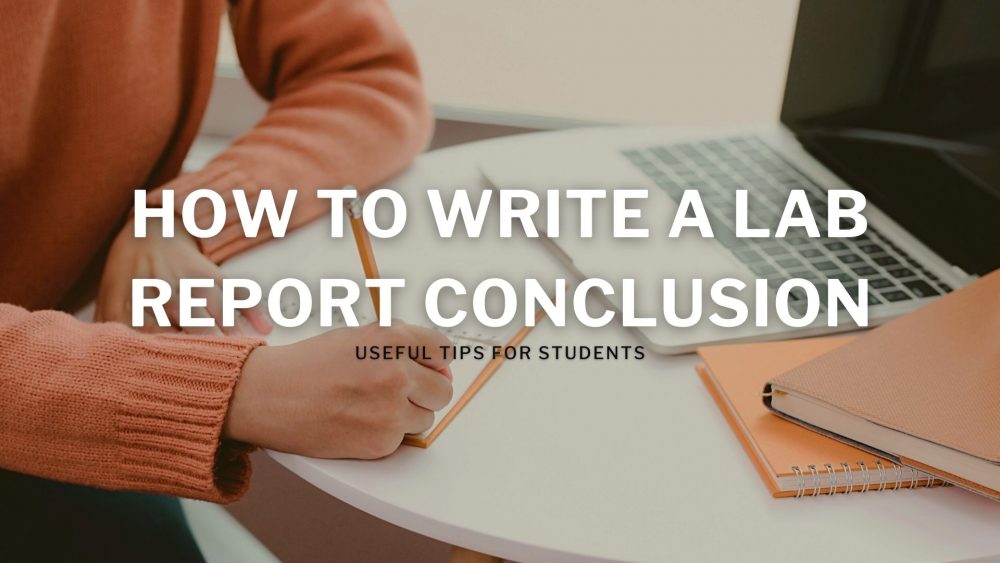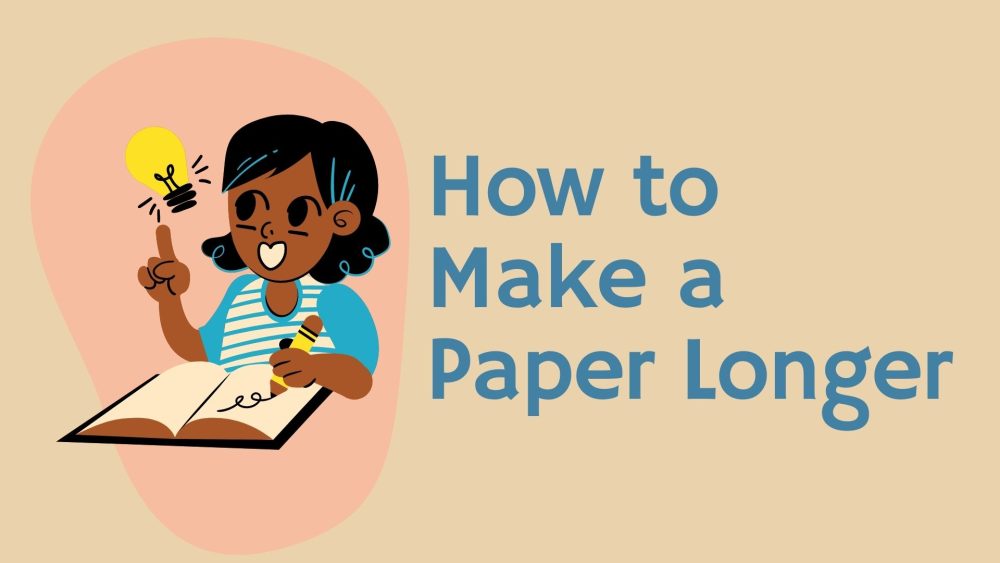Like other reports, without a conclusion, a lab report is incomplete. Conclusions are an integral part of lab reports and are fundamental to the demonstration of report objectives and reiteration of findings.
Although conclusions are often short, confined to a paragraph, they are nonetheless some of the most difficult aspects of a lab report.
This article will, therefore, explain how to write a good conclusion for a lab report. But before that, it will remind you of the basics and format of lab reports for a comprehensive exposition.
Basic Lab Report
All reports describe the process of an experiment or a study from the beginning to the end. There are several categories of reports and a lab report is one of them.
A lab report follows the same routine as a typical report. Except that in a lab report, you are mostly dealing with scientific and laboratory experiments. In other words, a lab report describes the process of a scientific and laboratory experiment from the beginning to the end.
A lab report is required to test what students — whether chemistry students or biology students — had learned in the course of an experiment.
Ideally, a lab report begins with an introduction and ends with a conclusion. Conclusion is often the part where the results of experiments are reiterated and readers are provided with a short but general overview of the whole process.
Science Lab Report Format
Unlike other reports, a lab report is fundamentally a science experiment report. A scientific report documents the process, procedures, and findings of scientific research.
An example of a scientific report is an academic essay a teacher asked you to submit about technology or the one you wrote about cancer.
Whether your lab report is biological or chemical, there is a format to all scientific reports. A typical scientific laboratory report will contain:
- Purpose: A brief description of what the research is all about, including the methods used and the resources available to the student.
- Hypothesis: Guess statements on expected results of the scientific experiment.
- Procedure: A step-by-step guide and instructions followed by the student in the course of the experiment.
- Lab Safety: Safety precautions adhered to by the student throughout the experiment.
- Data: Recorded experimental data generated on the experiment by the student.
- Observations: The sudden burst of insight and perspectives about the experiment.
- Results: The findings of the student from the experiment through collected data and observations.
- Conclusion: Summary of the experiment, most especially as the findings relate to the report’s purpose and hypothesis.
Lab Report Conclusion
As a university or college science student, writing a lab report might not be new to you but it is a challenging process. This is because the whole lab report structure consumes. From the objective of the experiment to lab report conclusions, each structure wrestles for time.
Learning how to write a discussion and conclusion for a lab report is not the same as learning how to write a lab report itself. While it could be said that knowing the latter should help with the former, it is not always so. There are several examples of great lab reports with shabby conclusions.
Conclusions can prove tricky and this is the reason why you need to learn how to write them. To conclude lab reports, you would need to be familiar with the lab report conclusion outline (also called the lab report conclusion template). You can consider the following 5 outlines:
- General Assessment
The first step to take before you conclude your reports is to assess the whole report from the beginning to where it stopped. This means you would need to visit and revisit the whole experiment to be sure that no structure of your report is left out.
The purpose of this is for you to go through the process of the report again. Experiments are usually consuming and at some points, you might get lost or stuck in a part and thereby lose that sense of touch with other parts. But if you can assess the whole experiment again, it would be easy to jot down the process in the report for a succinct conclusion.
- Introductory Assessment
After you might have assessed the whole report, you would need to pay more attention to the introduction of your report under this step. You should be looking at the proposed purpose of your report here and see if it tallies with what you intend to conclude with.
The introductory part of your report must align with the conclusive part. The introduction part should not be saying something different from the conclusion unless your report risks a crime of inconsistency. Consistency is essential to every great scientific and laboratory report.
- Conclusion Method
Now that you have assessed the general report and the introductory, the next stage is to apply the RERUN Method to conclude your report. The RERUN is a useful acronym for integrating the essential parts of your experiment in your conclusion. Just as the rest of the report, conclusions also contain key ingredients.
RERUN stands for Restate, Explain, Results, Uncertainties, and New. To brilliantly conclude your report, you would need to follow the acronym and apply what each letter stands for.
When you want to conclude, you should Restate the lab experiment and Explain what the whole project is set out to achieve. Then proceed to explain the Results through the generated data and confirmation of the hypothesis. After that, make provisions for the Uncertainty and discuss New matters or solutions arising from the experiment.
- Add Sections If necessary, you should add other sections of your experiment. Depending on the purpose of your project, you might need to add your data procedures or part of your observations to it. While the RERUN Method is a great way to conclude, it is not absolute. For instance, you may ask yourself “What is the importance of calculations in a lab report or my lab report?” and try to include the section where necessary.
- Conclusive Assessment Once you are done with the conclusion, you should assess that part again. You should look out for errors, consistency, and how the whole part of your report reads with and without that portion of the added conclusion. How long should a lab report conclusion be? It should be as concise and precise as possible.
Examples of Lab Report Conclusion
Provided are examples of a good scientific report conclusion and a bad one. The good one follows the outlines of concluding a report while the bad one negates the outlines. Through the examples, you can glean how best to conclude your report.
Good Example
A good report conclusion will contain all 5 outlines (mentioned above) that can be deployed for summing up your reports. Here is an example:
“In conclusion, team management is a process and only indicates the many strategies that go into it, helped by effective decision-making sequential and procedural. Since most decisions begin from problems, it is pertinent that the processes of decision-making reflect the identification of problems, definition of them, decision, action, and feedback. Through the sequences, it would be noted that decision-making can be programmed or non-programmed, depending on the flexibility and occurrence; and can be operational, tactical, or strategic, depending on the duration of the problem needed to be solved. Besides, there are styles of decision-making, informed by actions. These actions, however, should always be checked and balanced through effective feedback.”
Before the report conclusion was written, a general assessment of the whole report was made to jot down the process and relearned the experience. The first report hinges on team management and decision-making, both themes were justified.
Also, through an introductory assessment, the topic sentence and purpose of the report were clear. The conclusion was well-organized and the report was not bereft of the conclusion outlines not excluding the RERUN Method.
Bad Example
This is one of the examples of a bad report conclusion.
“The infant stage is considered fundamental. It is the stage where all other stages are premised. It is thus plausible that development theories be looked at from this stage. The stage shows how Piaget’s and Vygotsky’s theories work, which in turn provide perspectives to understanding breastfeeding and mental health in infants.”
From the conclusion, it can be gleaned that the report does not follow the outlines as well as the RERUN Method. The thesis statement was unclear and the conclusion itself seems hurriedly done.
Need Help With Writing a Lab Report Conclusion?
Learning how to write a conclusion for a biology lab report or a chemistry lab report or just any other lab report can be challenging. You could bypass the challenges, anyway, by hiring cheap and trusted homework help or an expert. You would need to be certain they could be trusted with your deadline and are quality enough to earn you top grades in class. Otherwise, you should learn the nitty-gritty of lab reports yourself.
It shouldn’t be difficult to learn how to end a conclusion in a lab report, considering that this article has taken you through the process of lab report itself and then the outlines of lab report conclusions. Also provided are lab report conclusion examples — both good and bad — that you can model yours after.






